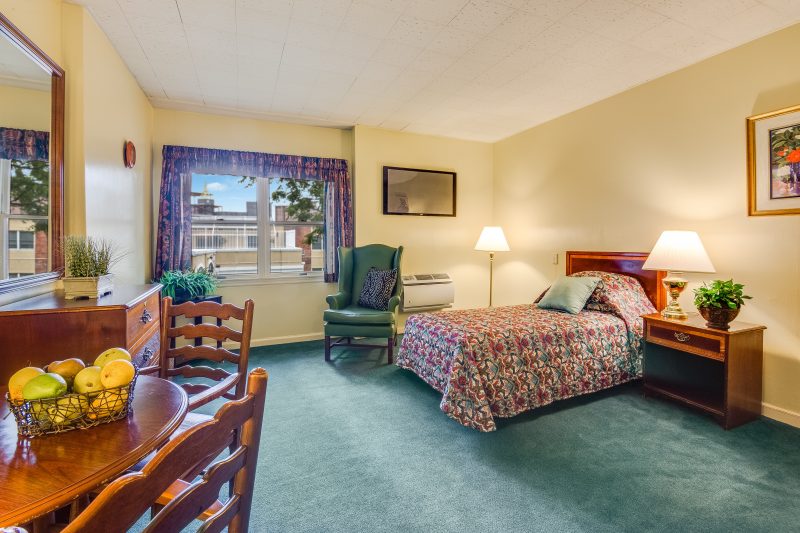If you or a loved one needs help with daily activities, an
assisted living facility might be right for you. These residential communities
offer personal care services and housing, as well as social activities and
support.
Many facilities also have a
full-time medical director, who can coordinate services with outside health
care providers. They can also help with medication management and provide
transportation for medical appointments.
Locations
Assisted living facilities near me in New York are spread out across
the city with some buildings even spanning multiple neighborhoods. These
complexes offer an impressive array of amenities and services designed to keep
their residents busy and happy.
For seniors looking to stay
active, you can find many fitness facilities onsite that feature daily and
weekly classes like Zumba or yoga. Other senior facilities may have their own
golf courses, skating rinks and swimming pools.
While it is hard to beat the convenience of your own home, a
move to a senior living facility can be an excellent way to maintain your
independence and social life. The best senior communities will provide you with
everything from housekeeping and meals to transportation and socialization.
The most popular senior living choices include independent
living, assisted living and memory care. Each offers a unique set of services
and amenities to suit the specific needs of your loved one.
Among these, the assisted living community is probably the
most popular option for both those who need a bit of assistance and those who
prefer to age in place. These communities provide a wide range of support
services for their residents, including medication management, personal care,
transportation and more.
A good assisted living community will feature an on-site
primary care practice and a robust schedule of social activities, including
music, art and dance classes. In fact, a study by the American Association of
Retired Persons (AARP) found that social interaction and involvement in senior
community programs are key factors in preventing cognitive decline in older
adults.
Assisted living facilities are regulated by the New York
State Department of Health. They are inspected at least twice a year and
require licensing to operate in the state. This is the best way to ensure that
your loved ones are getting top notch care and attention.
Rooms
The type of
room you choose in an assisted living facility can make or break your
experience. The rooms available in these types of facilities range from cozy
private or shared bedrooms to spacious apartments with kitchens and multiple
closets.
Smaller home-style facilities often feature bedrooms that
look and feel a lot like family bedrooms. These rooms are typically furnished
with twin beds, bedside tables and dressers for each resident, en suite
bathrooms and at least one closet.
Shared rooms -- two or more residents to a single bedroom in
a dorm-style arrangement -- are another popular choice for many assisted living
communities, Johansen says. This option usually costs less than a private room,
and it's a great way for seniors to get to know other residents in the
community.
Besides providing an affordable option, this kind of room is
also a good fit for seniors who want to remain independent. It allows them to
remain in a familiar place while receiving the care they need.
Some assisted living facilities also offer high-end
condo-style rooms, which feel more like a luxury condominium than an apartment.
The apartments may be larger and include fancier furnishings, appointments and
activities than an apartment-style residence.
These units might be more expensive than an apartment-style
residence, but they can provide the most privacy for some residents who need
supplemental care services around the clock. These residents can schedule their
preferred level of care through a third party, and the caregivers can be
available 24/7.
Seniors who need to have help with daily activities like
bathing, dressing, hygiene and laundry can find this option a good fit at an
assisted living facility. Besides having the staff provide these services, some
facilities also offer transportation to doctors' appointments and other
errands.
Assisted living facilities offer a variety of social
activities for their residents to participate in on a daily basis. This helps
keep residents busy and stimulated throughout the day, which is essential for
their mental health.
Choosing the right facility for
your needs and budget is important, but it's also crucial to do your research.
If possible, visit the facility or talk to a representative in person before
making a decision. Ask about the facility's amenities, services and staff. You
can also try out a sample meal to get an idea of how the food is served. It's
also helpful to see how the different areas of the facility look and feel, and
how clean they are.
Services
Assisted living facilities provide housing and care for
older people who need help with daily activities but don't require the medical
and nursing services provided by nursing homes. Generally, they offer around-the-clock
supervision and a range of services, including meals, housekeeping, laundry,
and transportation, as well as assistance with personal care and medication
management.
Whether you need long-term or short-term care, our advisors
can help you find the best senior living community near you. They'll help you
evaluate the pros and cons of different types of assisted living and guide you
through the application process.
A few key questions to ask a
potential facility are:
What services does the facility offer?
Typically, assisted living
provides services such as meal planning and preparation; assistance with
bathroom and dressing needs; laundry; transportation; and social and
recreational programs. Some facilities also offer memory care neighborhoods for
seniors with Alzheimer's or dementia.
Does the facility have a doctor on staff?
Many assisted living facilities have a licensed
physician on staff to monitor the health of their residents and assist them
with any medical issues. These physicians might be an internist, a family
practice or a specialist.
Does the facility have an emergency response system?
A good assisted living facility
will have an emergency response system in place so that residents can be
quickly rushed to the hospital in an emergency situation. It's also a good idea
to check out the facility's policies on medical visits and whether any of these
doctors are on the staff or if they have a separate practice that the resident
must visit.
Does the facility accept Medicaid?
Often, Medicaid will cover room and board costs for
low-income seniors at an assisted living facility. However, the specifics of
this program may vary by state. In some cases, families might need to work with
a Medicaid planning professional to creatively structure their assets so they
can qualify for the aid.
Medicare will also pay for
certain health services in assisted living residences, but it is important to
note that Medicare does not cover medications and only covers a limited amount
of the cost of services. Other resources, such as SSI and increased social
security benefits, can also be used to pay for assisted living room and board.
Costs
As you can imagine, the costs associated with assisted
living facilities are much higher than those for an independent living
apartment. This is because assisted living is a long-term care option for
seniors who need assistance with their day-today activities, such as bathing
and dressing.
Fortunately, there are a variety of ways to reduce the cost
of senior care. Several government programs, including Medicare, Medicaid and
Supplemental Security Income (SSI), can cover some or all of the costs. In
addition, a private long-term care insurance policy can help cover the costs of
assisted living.
Another way to make assisted living affordable is to compare
prices by facility and state. Some states have very low cost of living indexes,
resulting in lower median assisted living prices. Likewise, some states with
high cost of living indexes have relatively expensive average and median
assisted living costs.
The average
cost of assisted living in a specific state depends on a number of factors,
including how much the state spends on senior care, the cost of housing and
utilities and the availability of financial resources such as Social Security
and retirement funds. It also depends on how far you are from the state’s
capital and whether you live in a city or rural area.
In addition to the base cost of a room and board fee, there
may be additional costs for personal care. This includes assistance with
dressing and undressing, showering, medication management, safety checks and
transportation.
A variety of pricing tiers are used by many assisted living communities, based on the level of care provided. Some facilities use a points
system, where time spent on certain tasks equals a price, while others charge a
fixed rate that changes according to the number of hours that a resident needs
care.
In New York,
for example, the average cost of assisted living is $4,580 a month, nearly $280
more than the national average. This difference is due to the high costs of
living in the Northeast and a greater need for assisted living in New York than
other states.









